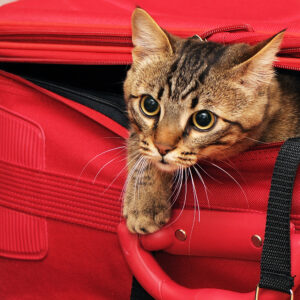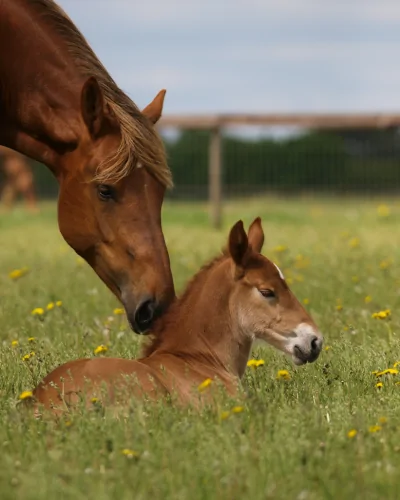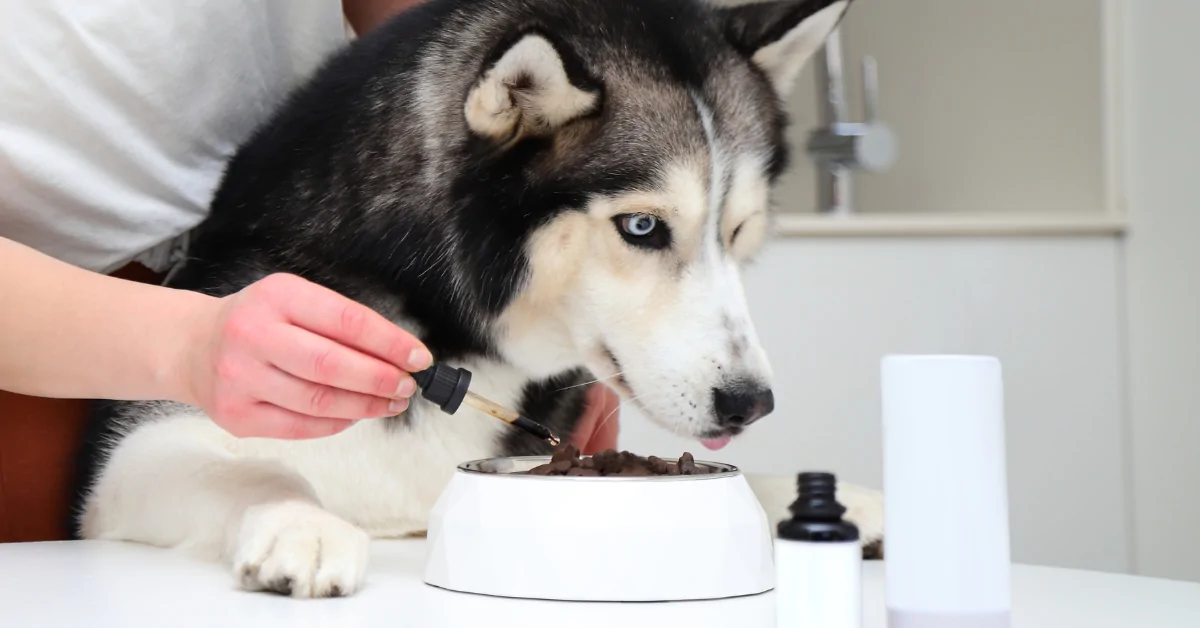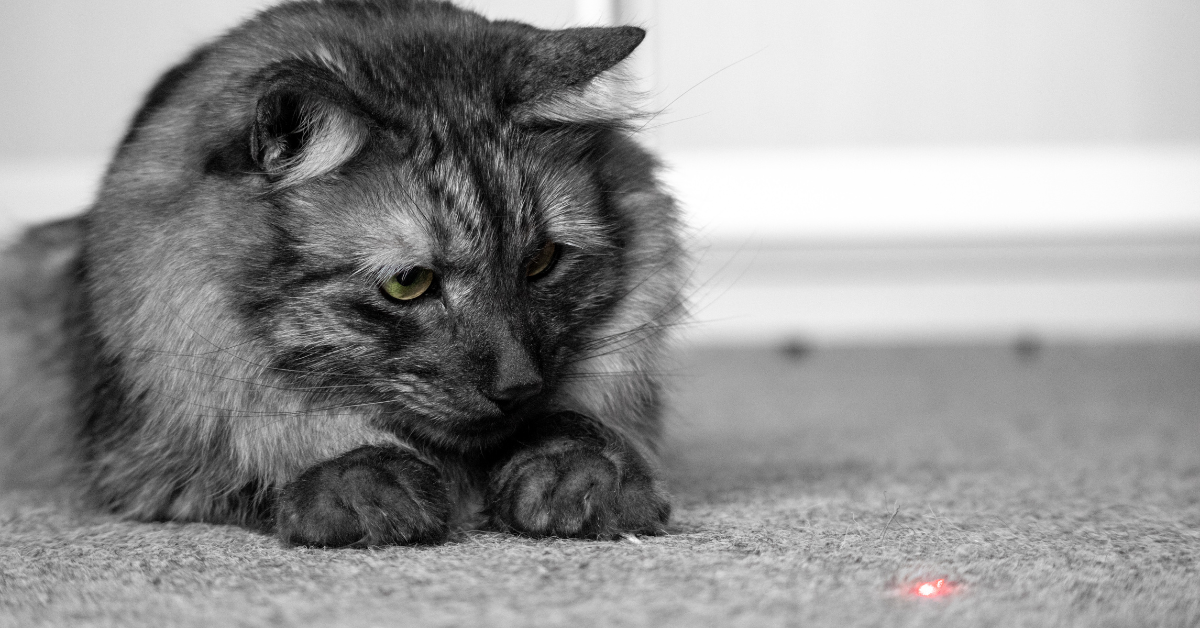
Cat ready for plane ride
So the day is drawing nearer and you’re getting closer to lounging on a beach somewhere or cozying up in a cabin, or… somewhere else.
Look, we don’t know where you vacation, but what we do know is that you probably hate the idea of leaving your pointy-eared buddy behind.
We get it! We don’t know how we’d survive two weeks without Mittens, either!
But just because we want to romp cross-country with our feline-friend doesn’t mean we should, does it? Or….does it mean exactly that?
Well, we’ll answer this exact question in this short article below!
Make Sure Your Cat Can Even Get on the Plane
Look, we understand if you’re surprised (or even angry) at the possibility that Mittens won’t be able to easily fly on a plane, but that very well might be the case.
There are a variety of countries which have very strict quarantine requirements for all inbound animals, some quarantines require weeks of confinement to complete. If your trip is international and only lasts a week or two, you may be better off leaving your cat at home.
Furthermore, if you are flying out of the country, you need to make sure your airline will even allow your pet to board! We know, this sounds really crazy, but some airlines like Southwest won’t assume the liability of transporting pets across international borders.
However, it’s not as if flying domestically is a walk in the park, either. There’s still lots of things you have to consider even if you’re just going to the next state over.
Figure Out If Flying is Really the Best Option for Your Cat

Is your cat ready to fly?
Make no mistake: deciding to fly with your cat is not a decision you should make f-lightly (we are so sorry about that pun).
Flying can be a very stressful experience for your cat. There will be bright lights, loud noises, lots of unfamiliar people, air pressure changes – the whole shebang.
Plus, it’s not like flying with your cat is particularly cheap. Some of the largest airlines in the United States charge up to $125 each way for an in-cabin pet. You may have to pay extra fees on top of that since your cat is likely to be considered a carry-on.
These are just some of the reasons why Justine Lee, a veterinary expert with Pumpkin Pet Insurance, says that you should avoid flying with your cats unless it’s your last resort. “In general, I recommend not flying with a pet unless absolutely necessary,” says Lee. “Ideally, pets should not fly unless an owner is moving permanently or taking a long trip—two to four weeks minimum.”
However, sometimes flying with your cat is the only available travel option. If that’s the case, make sure you have the rest of this list handy.
Consider Whether or Not Your Cat Will Fly In-Cabin or Cargo
In-Cabin
Since in-cabin travel with animals is typically permitted for animals weighing no more than 20 pounds, this is the most likely way you’ll fly with your cat.
However, this isn’t always the case. Since different airplanes have different amounts of under-seat space, you should check with your airline to make sure your cat’s carrier will be able to comfortably fit beneath your seat.
Additionally, if you’re traveling as a single passenger with two cats, you may want to have them travel as cargo so as not to separate them.
Cargo
A plane’s cargo space is a pressurized, temperature-controlled compartment located on the aircraft’s underbelly. In the event that you are travelling with more than one cat or with a larger cat whose carrier will not comfortably fit under your seat, this is the most likely way you’ll fly with your cat.
There are actually two ways cats can fly as cargo: either as a checked bag on the same flight as you, or as unaccompanied shipping cargo. It’s important for us to remind you that there may be shipping timelines you need to consider if your cat travels as unaccompanied cargo.
Make sure your Pet is cleared to fly (both ways) with your Veterinarian

Vet checking cat’s health for travel
Let’s just make this clear: you cannot skip this step and expect to be allowed on a plane. The vast majority of airlines require a clean bill of health from your cat’s veterinarian in order to get on the plane.
That means all of their vaccinations need to be up-to-date, and you should make sure you have a hard copy of their rabies vaccination certificate on-hand to present to the gate agent.
Don’t go booking your vet appointment months in advance, either; your cat’s certificate of health is only valid for 30 days after it’s issued and you’ll need one for both your departing and return flight. That means, if your trip is longer than 30 days, you’ll need to schedule a trip to the vet while you’re at your destination in order for them to board the return flight.
Sigh. We know. We can’t believe how complicated that is, either. And, what’s worse, is that some cats won’t ever be medically cleared to fly because of their breed! Some snub-nosed cats like Persians and Burmese aren’t allowed to fly because airlines fear they’ll suffer respiratory distress at high altitudes.
Get Your Cat a Quality Kennel
Whether your flight is just to the next major metro area in your state or across the ocean, you’ll be required to store your cat in an appropriately-sized carrier. To most airlines, that means your cat’s carrier has to be large enough for them to stand up and turn around. But, here’s the snag, it also may have to be small enough to fit under an airline seat!

Purchase the correct cat carrier
You can read more about the exact pet carrier requirements as dictated by the International Air Transport Association by clicking here.
However, we don’t expect you to read that whole thing. So, instead, we’ll just tell you what you need to know.
Your cat’s carrier should provide adequate ventilation and possess strong handles with a bottom that won’t allow any liquid to leak out. Also, since you’re likely to travel in-cabin with your cat, you may want to opt for a soft-sided carrier for easier handling.
Additionally, you must mark the words “Live Animal” on your cat’s carrier and clearly signal which direction is up.
Finally, a label must be tacked onto the carrier that includes key information such as your name, phone number, address, and the contact information of where you’ll be staying at your destination.
Build Positive Associations for Your Cat with Their Kennel/Carrier
We’ve already said this like a million times before, but we want to say it just one more time for the people in the back: if you want your cat to be happy about getting in their carrier, you have to do some work to make that happen.
However, cats aren’t like dogs; you can’t just start shoving them in their carrier and give them a treat to calm down. Instead, you’ll have to help them build their tolerance to their carrier one step at a time.
For a few weeks before your flight, leave your carrier out in common spaces and leave treats inside. You may also want to start feeding them inside their carrier. If they won’t eat in their carrier right away, start by placing their food dish a foot away from their carrier and move it an inch or two closer each day.
You may even want to train them to enter, stay inside of, and exit the carrier for a few minutes each day to make them more comfortable with the sensation of being inside their carrier!
Once your cat can confidently remain inside the carrier for more than a few minutes. Then, practice closing the carrier door with them inside. Praise your cat and give them a treat after each successful run.
After a few successful runs of this, you’ll then want to practice picking up and walking with the carrier. Be sure to praise them and give them treats.
Follow This Short Guide for final Flight with your Cat

Make sure your have everything for a safe travel with your cat
Though it may seem a bit mean, do not feed your cat for six hours before their flight. This minimizes the chance that their stomachs will get upset. You’ll also want to line your cat’s carrier with absorbent potty pads. This way your cat has a place they can relieve themselves while in-transit.
Before you leave the house, make sure to quadruple-check that you have everything on-hand you need to travel safely! This includes, but is not limited to:
- All medications your cat currently takes. (Including our 2oz travel size Banixx Pet Care. Just in case your cat needs his ears cleaned or treated for a little yeast infection.)
- A small container of your cat’s preferred food.
- A small, collapsible water bowl (and money for a water bottle).
- Treats (of course).
- Travel litter.
- Potty pads and cat waste bags.
- A leash, collar, and harness.
- Their favorite bed.
- All relevant records and health documentation.
Arriving at Airport
After you arrive at the airport, let your cat walk around to get their energy out. Make sure you give them access to litterbox too! The last thing you want is for them to have to relieve themselves midway through security!
Once you get inside your terminal, go to the passenger check-in desk and present all of the necessary paperwork. If your cat is travelling as checked baggage in cargo, you’ll need to check them in with the airline. Make sure to attach a small amount of food to their carrier. This way the airline can feed them in the event of a long delay.
If your cat is flying with you under your seat, your cat’s carrier will need to be scanned by security without your cat inside. That means you’ll need to guide them through security in your arms. (Which is not recommended.) Or in a securely-fitting harness with a leash.
After you’ve gotten through security, locate your cat’s carrier and put them back inside before retrieving your belongings. Now just go to your gate and wait to board your flight!
Post Flight
Once you get to your final destination, go get your checked baggage from baggage claim. Then take your cat for a walk to let them relieve themselves and get some water!
And now you’re done! You’ve flown with your cat and nothing has gone wrong (hopefully!) We know that was stressful, but hopefully all the careful planning and preparation made it a bit easier.
That’s why, even if you’re not doing something as labor-intensive as flying with your pet and are instead just planning a road trip, we know you’ll be just as diligent to ensure your pet is happy and healthy the whole time!
Once you’re back home again with your cat, you can learn more about how to keep your pointy-eared buddy happy and healthy through our cat blog or cat page! We hope you found this article helpful and if your cat ever gets any cuts, abrasions, ear infections or ringworm, we hope you keep Banixx Pet Care in mind.
Sources
https://www.nerdwallet.com/article/credit-cards/how-to-take-your-cat-on-a-plane
https://www.cntraveler.com/story/flying-with-a-dog-everything-you-need-to-know
https://www.petrelocation.com/blog/post/cat-travel-cabin-vs.-cargo
https://www.iata.org/whatwedo/cargo/live-animals/pets/Pages/index.aspx
https://www.thedrakecenter.com/services/cats/blog/how-train-your-cat-cat-carrier-it-possible
Share this Post
Featured Post
Recent Posts
Lipomas….mysterious Lumps & Bumps on your pup…When should I worry? What should I do about them?

Managing the Mamas –Part 2 –The development process

Managing the Mamas: Part 1 – Preparing to Breed Your Mare

HOW MANY TOES?? Caring for the Polydactyl Cat

Do Dog Joint Supplements Actually Work?


